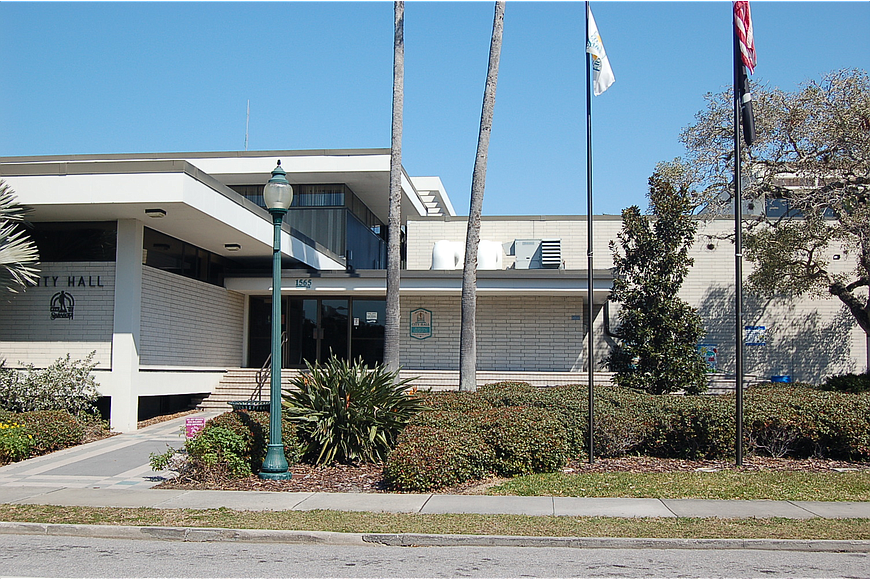- January 7, 2025
-
-
Loading

Loading

The city’s outreach efforts helped house more than 100 people last year, a statistic officials highlighted as an encouraging sign of progress during a discussion of homelessness at Monday’s City Commission meeting.
Kevin Stiff, the city’s homelessness response coordinator, delivered an update Monday on city initiatives related to homelessness. Although Stiff and other city officials said there are still significant challenges to address, he said the city’s approach to the issue since 2017 has produced measurable benefits.
During his presentation, Stiff praised the work of the city’s homeless outreach teams, a joint effort between civilian case managers and police officers that works to connect homeless people with local service providers. The city funds the availability of 25 shelter beds at the Salvation Army, reserved for people found to be in violation of the city’s lodging out-of-doors ordinance and those who have shown an interest in receiving services targeted at homeless people.
In 2018, the city reported 296 different people used those beds. Of those individuals, 107 found permanent housing, while another 21 found another living arrangement off the streets. Stiff said that represented a 43% rate of positive outcomes.
“Many people around the country consider that extremely well done,” Stiff said. “And I can only say that positive outcome is a result of the case managers and the continuum of care that we work closely with.”
Stiff cited a decline in the number of emergency service calls for homeless people. The Sarasota Fire Department responded to 1,051 service calls in 2018, a decrease of 22% from 2017 and 29% from 2016.
Stiff’s report said 89 people involved with the Salvation Army Street Teams, an employment training program, found full-time employment in 2018.
In 2018, the city spent $611,000 to fund partnerships for services targeted at homeless individuals, such as the Salvation Army beds and street teams. Stiff referenced studies that estimated the cost of a chronically homeless individual to the community at $30,000. Stiff suggested the 128 “positive outcomes” could represent a value of $3.8 million.
Despite his positive outlook, Stiff acknowledged there is still work left to do to address issues related to homelessness in the country. He expressed encouragement that the city knows more information about individuals who continue to be unhoused, making it easier to direct them to services and effective treatment going forward. He said the city is working with the Sarasota Police Department to target individuals who are breaking the law, pointing to a number of arrests associated with spice in the past few weeks.
City Commissioner Hagen Brody questioned whether the city could prioritize more active law enforcement for individuals who aren’t actively seeking housing or services, asking Stiff if staff has considered “emphasizing more of a 'stick' approach.”
"What I'm talking about are the people that are clearly not in that group, that are not taking advantage of the circumstances," Brody said.
Stiff said the city is partnering with the 12th Judicial Circuit Court on a homelessness specialty court, designed to help provide a “bridge to services” for defendants experiencing homelessness. Stiff said he was optimistic providing opportunities for services within the criminal justice system would help distinguish between individuals interested in seeking help and those who aren’t.
“My hope is that if we have a dedicated judge, a dedicated state attorney, a dedicated public defender, that staff will continue to see the same individuals in front of them and understand that this individual is not being responsive to opportunities given,” Stiff said.
City Manager Tom Barwin said there were issues associated with sending homeless individuals, particularly those dealing with substance abuse and mental health problems, through the criminal justice system without offering specialized treatment. Because the jail is dealing with overcrowding issues, Barwin said, low-level offenders are often released early to clear space — which means relying on arrests isn’t an effective approach to addressing homelessness.
Barwin expressed a desire to facilitate a community conversation about the best approach to addressing homelessness with other community stakeholders, including Sarasota County.
“The point is, as we continue to work on this challenge, we continue to need more appropriate facilities, better facilities that lend themselves to success,” Barwin said.